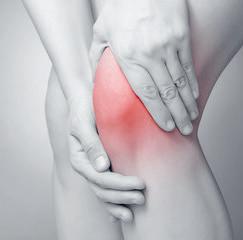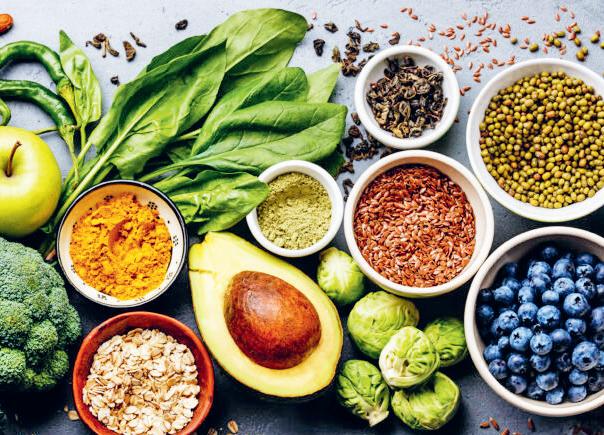
11 minute read
Dr Wong: on diabetes
What can we do to help tackle diabetes?
WORDS: DR CARL WONG
DR CARL WONG IS A LANE COVE-BASED GP AND SITS ON THE BOARD OF SYDNEY COMMUNITY SERVICES
One of my favourite childhood movies was the remake of author Roald Dahl’s Charlie and the Chocolate Factory starring Gene Wilder. The Chocolate room, ever-lasting gobstoppers, lickable wallpaper – it was a child’s dream! On reflection, I suspect though that if Willy Wonka was actually a real person, he would have a lot to answer for in regard to his contribution to a condition that affects one in 11 adults worldwide – diabetes.
With National Diabetes awareness week this month, now is a good time to remind ourselves about this country’s fastest growing chronic condition. According to Diabetes Australia and the Australian Institute of Health and Welfare (AIHW): - 280 Australians develop diabetes every day (that’s one person every 5 minutes!) - 1 in 20 of Australian adults (5%) have some form of diabetes. - 11% of all hospitalisations are diabetes-related and - just over 1 in 10 Australian deaths have diabetes as a related cause. It affects all ethnicities, with Indigenous Australians particularly being more affected – four times higher rates. But how does diabetes occur? A large part comes down to what we put in our mouths. When we eat sugar-containing foods, our body produces a hormone called insulin to convert these sugars into glucose which is then used to fuel our body, either immediately as energy, or stored in our liver and muscles for future use. Put simply, diabetes occurs when insulin is not working, leading to excessive glucose in our blood stream. The problem is either a complete lack of insulin (like in Type 1 diabetes, making up 10% of all diabetes cases), or ineffective/defective insulin (like in Type 2 diabetics, who make up the majority 85% of cases). The other significant group is gestational diabetes of which one in six women will develop during pregnancy, leading to a higher risk of later developing Type 2 diabetes over the next ten years. But whichever the specific cause, the excessive blood glucose levels lead to widespread complications if left undetected and uncontrolled. The effects are profound. It is the leading cause of preventable blindness in Australia. There are over 4000 limb amputations annually due to diabetic ulcers and wounds. Diabetics are between two or four times more likely to develop heart disease, and heart disease is their leading cause of death. Over 12,000 diabetic Australians are on dialysis or have received a kidney transplant. Clearly, preventing these complications are essential. So what can we do? Screening and early detection of diabetes is one big step. Local endocrinologist, Associate Professor Sarah Glastras agrees ‘screening is incredibly important. You often will not know you have diabetes until it is very advanced, and many people will have had the condition for years before they are diagnosed. Many of the complications are picked up at the time of diagnosis. See your GP for a simple blood test.’ In most cases of Type 2 diabetes, there are no symptoms, leading to delayed diagnoses unless routine check-ups are done via your GP. Your GP will also be able to assess your risk of developing diabetes over the next five years via a risk calculator. Risk factors for Type 2 diabetes include: a family history of diabetes, older age, being overweight/ obese, having high blood pressure, insufficient physical activity, poor diet, and having an ‘apple shape’ body i.e. having more waistline fat. The best way to self-manage diabetes, whether that be via prevention or treatment once diagnosis is confirmed, is dietary and lifestyle modifications. Eat regular meals spread evenly throughout the day, with a diet lower in fats, particularly saturated fats. Exercising regularly maintains a healthy weight/lose body fat, lowers your blood pressure and reduces your risk of heart disease. Aim for 30 minutes to one hour of daily exercise - any exercise is good that keeps your body moving and your heart rate elevated. An important thing to know is that there is no ‘one size fits all’ approach. ‘The holy grail is weight reduction’ says Professor Glastras, ‘there is no single diet that is the best one. It’s a discussion with the patient, doctor and dietician as to what is the best diet to suit that person. Patients should move a lot to build up lean muscle mass as this will also reduce central waistline fat’. Treating patients with diabetes will likely need oral medication and possible injectable forms as well. Many people feel that injections should be avoided at all costs – not true! Type 1 diabetics need injectable insulin from Day One. Injectables are being used increasingly earlier in treating Type 2 diabetics to ward off complications and to assist with weight loss (an area of ever-growing future advancements). The child in me sometimes wishes there was a Willy Wonka who could invent confectionery that doesn’t contribute to diabetes but still tastes like the real thing. That would certainly be worth a Golden Ticket!
Imagine what you could do if you had less knee pain?
Only 5 FREE copies available
It’s important for you to know…knee pain is not something you have to “live with.” Take a moment, close your eyes and imagine what else you could do today…if you didn’t fear your knee hurting or limiting you.
ARE YOU FINDING IT HARD TO:
• Walk without pain? • Go up or down steps? • Bend your knee? • Get up out of a chair?
If you’d like to know more about living with much less knee pain, then this FREE special report is perfect for you. It details the solutions we recommended every day to our clients to help them avoid surgery, maintain independence and get back to moving pain free.
FOR EXAMPLE:
• How to ease your throbbing knee pain • Discover the little-known way to exercise - without increased knee pain. • A simple remedy for easing knee pain that will cost you nothing - perfect to stay active and mobile • The one thing that you can change today to dramatically improve your knee pain • The safest and most effective movements to ease your knee pain There are many options out there to treat knee pain. But, many of them require you to take pills, take dangerous injections to your knee and WORSE end up with surgery!! If you have had enough of your knee pain and want to take control of your health and you want to get back to playing golf, walking with friends or get down to the local shops without pain, then contact us for your FREE copy of “How to stop knee pain - 5 simple secrets without having to take pain killers or see the GP”. REQUEST YOUR FREE COPY OF “How to stop knee pain - 5 simple secrets without having to take pain killers or see the GP” by calling this number now: 9427 8333 Or email: lanecove@weareswitch.com.au.


Burns Bay Physiotherapy 9427 8333
161 Burns Bay Rd, Lane Cove E: info@burnsbayphysiotherapy.com.au www.burnsbayphysiotherapy.com.au
James Becerra Harrison Brown
Calm down inflammation with food
WORDS: FEDERICA NEGRO

Have you ever sprained your ankle, cut yourself or stung by a bee? The pain, redness, swelling, and heat that it produces are the body’s defence mechanism to fight the acute inflammation and to repair tissue damage.

Have you ever heard of chronic inflammation? Chronic inflammation can begin via the same process but can last from several months to years. Symptoms include fatigue, muscle aches, gastrointestinal issues (constipation, diarrhoea, bloating), weight gain, headaches and skin issues. Low-grade, chronic inflammation can contribute to several diseases including Alzheimer’s, dementia anxiety and depression, high blood pressure and heart disease, type 2 diabetes, allergies, asthma and skin conditions. There is a substantial amount of evidence to suggest that many foods and nutrients modulate inflammation both acutely and chronically.
What foods cause inflammation?
1. Sugar and other refined carbohydrates: Table sugar (sucrose), high-fructose corn syrup, brown sugar, barley malt, dextrose, fructose, glucose, malt dextrin and maple syrup. Foods high in added sugar include candies, chocolate, cookies, cakes, soft drinks and some breakfast cereals. Refined carbohydrates like white pasta, rice, white bread have most of their fibre removed. Fibre promotes fullness, improves blood sugar control, and feeds the beneficial bacteria in your gut. 2. Artificial trans fats: On ingredient labels, trans fats are often listed as partially hydrogenated oils. Foods that contain trans fats include processed foods like frozen fried foods, microwave popcorn, certain margarines and vegetable shortenings, packaged cakes and cookies, some pastries, and all processed foods that list partially hydrogenated vegetable oil on the label. 3. Vegetable and seed oils: Vegetable oils like canola, sunflower oil, palm oil and soybean oils increase inflammation due to the high content of omega-6 fatty acids. 4. Excessive alcohol: A moderate alcohol intake, of red wine in particular, has been shown to provide some health benefits. However, higher amounts can lead to severe problems. 5. Processed meat: Common types of processed meat include sausage, bacon, ham, smoked meat, and beef jerky.
What foods can we eat to reduce inflammation?
1. Berries: Berries contain high amounts of anthocyanins. Anthocyanins are powerful antioxidants with antiinflammatory effects. 2. Eating the rainbow of vegetables: Vegetables contain different pigments, or phytonutrients, which give them their colour. Focusing on eating a variety of colours will increase your intake of anti-inflammatory compounds. 3. Oily fish: Salmon, sardines, mackerel, anchovies are all great examples of oily fish. They are a great source of antiinflammatory omega-3 fatty acids. 4. Avocados: Avocados are packed with healthy monounsaturated fats. They also contain anti-inflammatory carotenoids and tocopherols. 5. Extra Virgin Olive Oil: Extra Virgin Olive oil is one of the healthiest fats you can eat. It’s rich in monounsaturated fats and a staple in the Mediterranean diet, which we know has a numerous health benefits. 6. Dark chocolate: Dark chocolate is delicious and also rich in flavanols, some very powerful antioxidants! 7. Turmeric: Turmeric has gained a lot of attention in the recent years due to its component, curcumin, a very powerful anti-inflammatory. To make sure you get the best effect out of turmeric, remember to heat it and add some black pepper! 8. Green tea: Tea has antioxidants called catechins, which reduce inflammation. Green tea contains EGCG, the most powerful type of catechin.
Federica is a clinical nutritionist available at Healthspace. She understands nutrition can be confusing and is passionate about guiding people through the confusing noise.
COMMUNITY SPOTLIGHT ANTONIO MEDURI
Antonio Meduri’s flower stall saved!
Antonio Meduri is a wellknown local face. One resident has even gone so far to describe him as a Lane Cove “institution”. High praise, indeed.
It’s no wonder. He’s been a fixture on Burns Bay Road, near Linley Point, selling his market stall flowers, for more than 40 years. The business is a stalwart as his it was his father before him that set up shop on the road. Antonio is a licensed grower from Flemington Markets and sells his own freshly grown and cut flowers. Rain, or shine, he is out at Linley Point and boasts the only time he ceased working was for his daughter’s wedding. “I would never get flowers if my husband never drove past Antonio,” joked another resident. Antonio uses the same parking bay that is occasionally used by Highway Patrol to conduct Random Breath Testing, and in May Highway Patrol moved to permanently stop Antonio for operating at his spot. Upon discovering the news, the local community swooped in and put pressure on Anthony Roberts MP to back Antonio and secure his spot at Linley Point. More than 3,000 people (five per cent of the Lane Cove electorate) signed a petition set up by Mr Roberts. The Linley Point community also rallied around Tony, as they call him, and told the media that he “is a much-loved character who has been selling flowers in the same location for decades. “He is a kind member of our community who makes an honest living out of his flower business,” they said. Thanks in large part to the petition and the work of the Linley Point community, Antonio will be returning to Burns Bay Road very soon and will continue serving the Lane Cove community for as long as he can. He has also said that if and when he decides to retire, his son will pick up where he left off - continuing the Meduri family tradition of bringing joy to the community. “This gentleman brings a smile to my face whether I stop to purchase or not,” said one of the petition’s signatories QUOTES FROM THOSE WHO SIGNED THE PETITION: “This gentleman brings a smile to my face whether I stop to purchase or not” “Antonio is an Institution “I would never get flowers if my husband never drove past” “I’m 16 and I’ve grown up driving past Antonio. I couldn’t bare to think of his losing his business. Such a nice business for our community”

COMMUNITY SPOTLIGHT IS PROUDLY SUPPORTED BY ANTHONY ROBERTS MP. Authorised by Anthony Roberts, Ground Floor 215 Victoria Road Gladesville NSW 2111. Funded using Parliamentary Entitlements.










